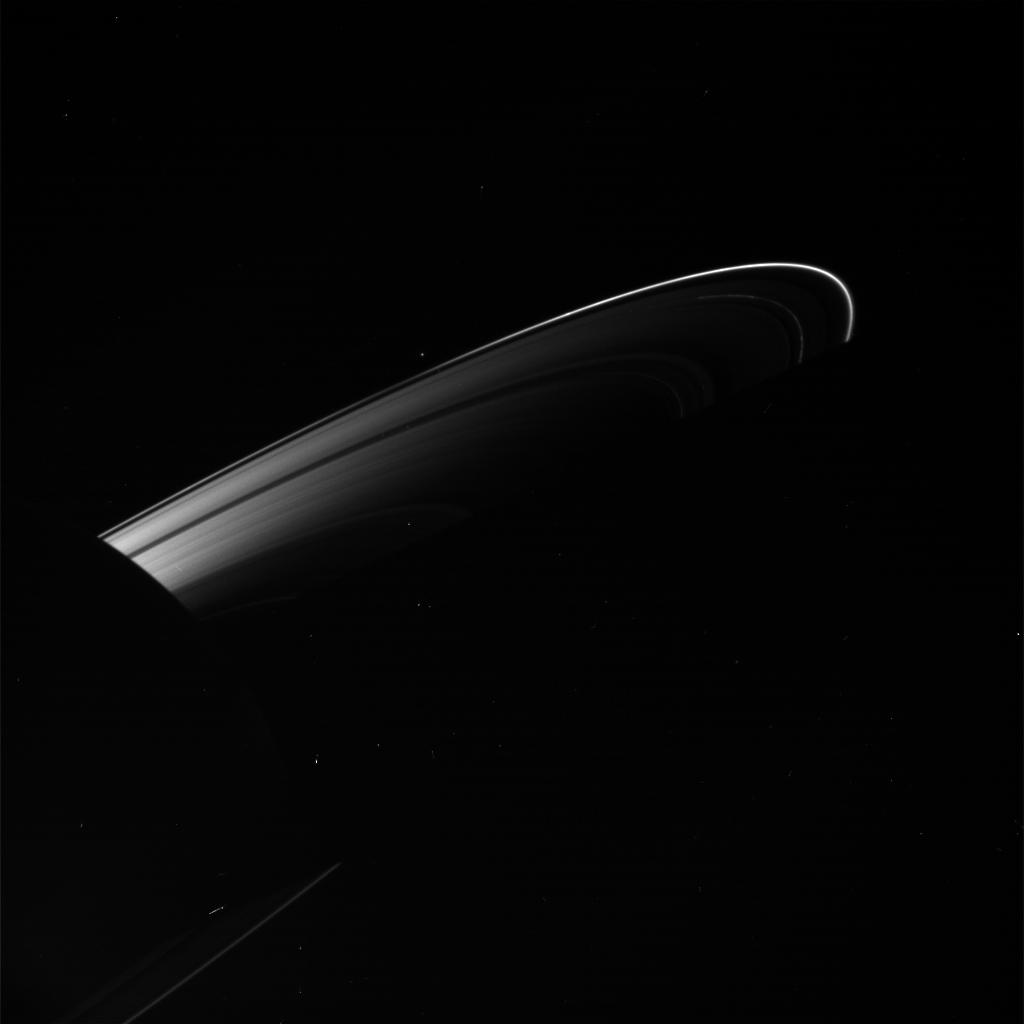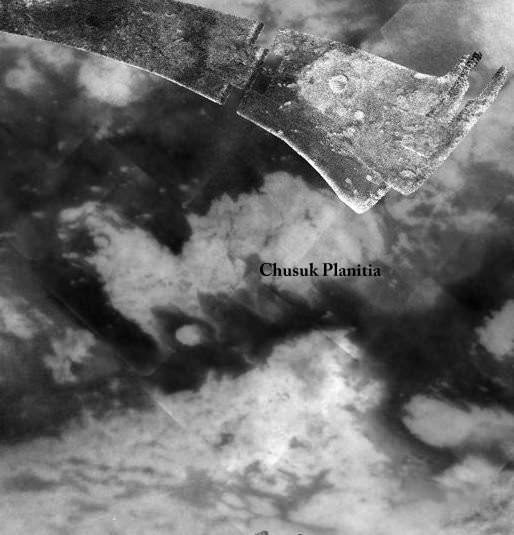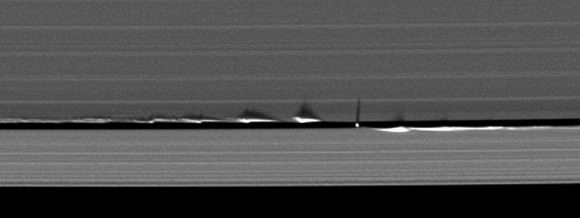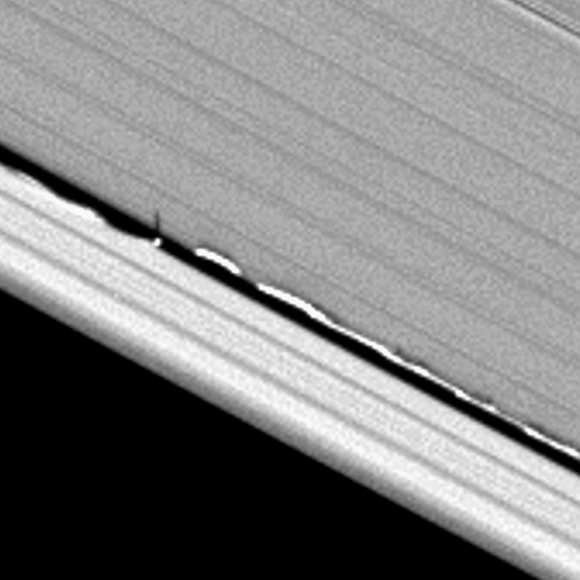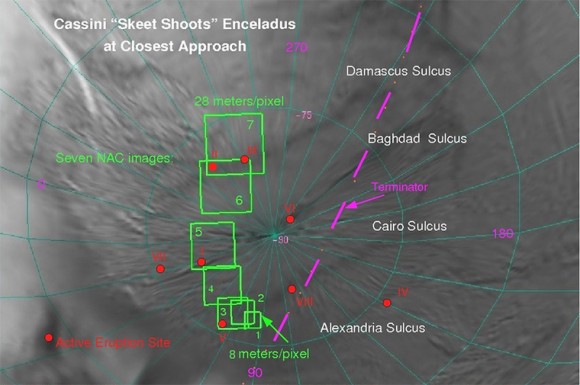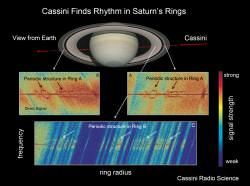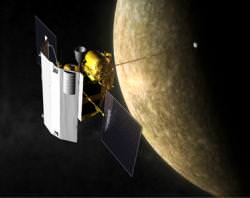[/caption]
Today, August 11, 2009, is Saturn’s equinox. As we’ve been saying for a few months, the rings are going to disappear — at least from our vantage point on Earth. “Whenever equinox occurs on Saturn, sunlight will hit Saturn’s thin rings, the ring plane, edge-on,” said Linda Spilker, deputy project scientist for the Cassini spacecraft at Saturn. “The light reflecting off this extremely narrow band is so small that for all intents and purposes the rings simply vanish.” But even from the view at Saturn, weird things are happening in the rings, and the Cassini spacecraft has a front row seat watching it all take place. Above is one of the latest raw images sent back from Cassini, taken on August 7, 2009 showing how the sunlight is hitting the edge of the rings. It is a gorgeous shot. Below, see some of the strange sights Cassini has been seeing, including a buzzsaw, a blasted ring, and tell-tale moon shadows. For more about Saturn’s equinox, check out today’s 365 Days of Astronomy podcast with Emily Lakdawalla of the Planetary Society and she’ll tell you all about the weird and beautiful play of light and shadow going on at Saturn.
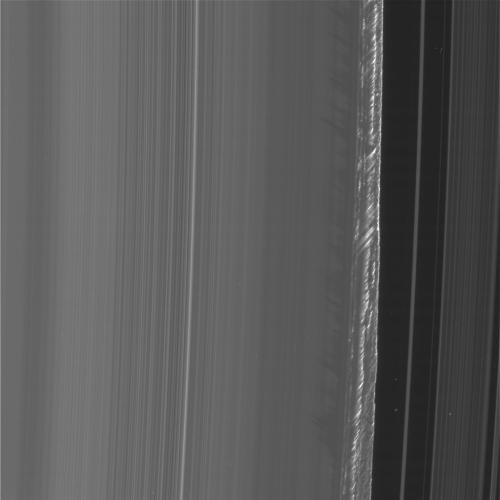
This image is really strange. Objects and waves in Saturn’s rings cast weird shadows back on the rings, and to me, this one looks like the jagged teeth of a saw. Interestingly, these shadows are faint, unlike the dark, black shadows we’ve seen in previous images. Check out our previous post about shadows on the rings.
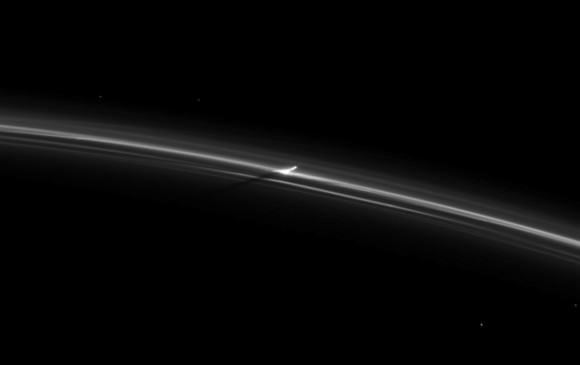
In this image, it appears as though a small object on an inclined orbit has punched through Saturn’s narrow F ring, bursting out from underneath, and dragging behind it a wake of particles from the rings. Phil Plait discussed this image at length over at Bad Astronomy, so check out his take on this crazy picture.
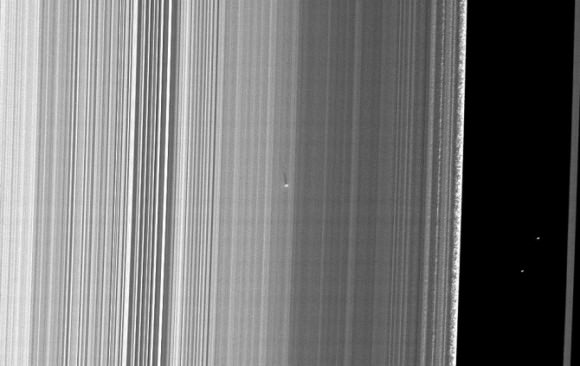
The angle of the sun hitting the rings makes objects show up that we normally don’t see. Take, for example, this newly discovered moonlet in Saturn’s B-ring. The small moon has a diameter of approximately 400 meters, and it only becomes obvious when sunlight hits the rings edge-on, creating a 40 km (25 mile) -long shadow. If the Sun was above or below the rings, no shadow would be cast, and therefore no moonlet would be visible.
Enjoy the sights, because Saturn’s equinox only happens once ever 15 Earth years.
For more on the mission and the equinox, check out the Cassini website.
One other Cassini note, the spacecraft performed a flyby of Titan on August 9, the 61st time it has targeted Titan as a flyby object, passing at a distance of 970 kilometers (603 miles) above the surface at a speed of 6.0 kilometers per second (about 13,400 mph). Unfortunately, all the data it gathered during this flyby were lost due to a temporary outage at the Goldstone Deep Space Network Facility during Cassini’s transmission back to Earth. As unique, high-priority data from Saturn’s equinox was planned to be taken soon after flyby, there was no redundant playback scheduled.
Rats!
Sources: 365 Days of Astronomy, Bad Astronomy, Astroengine, Cassini website
Hat tip to Stu Atkinson on the buzzsaw image!

